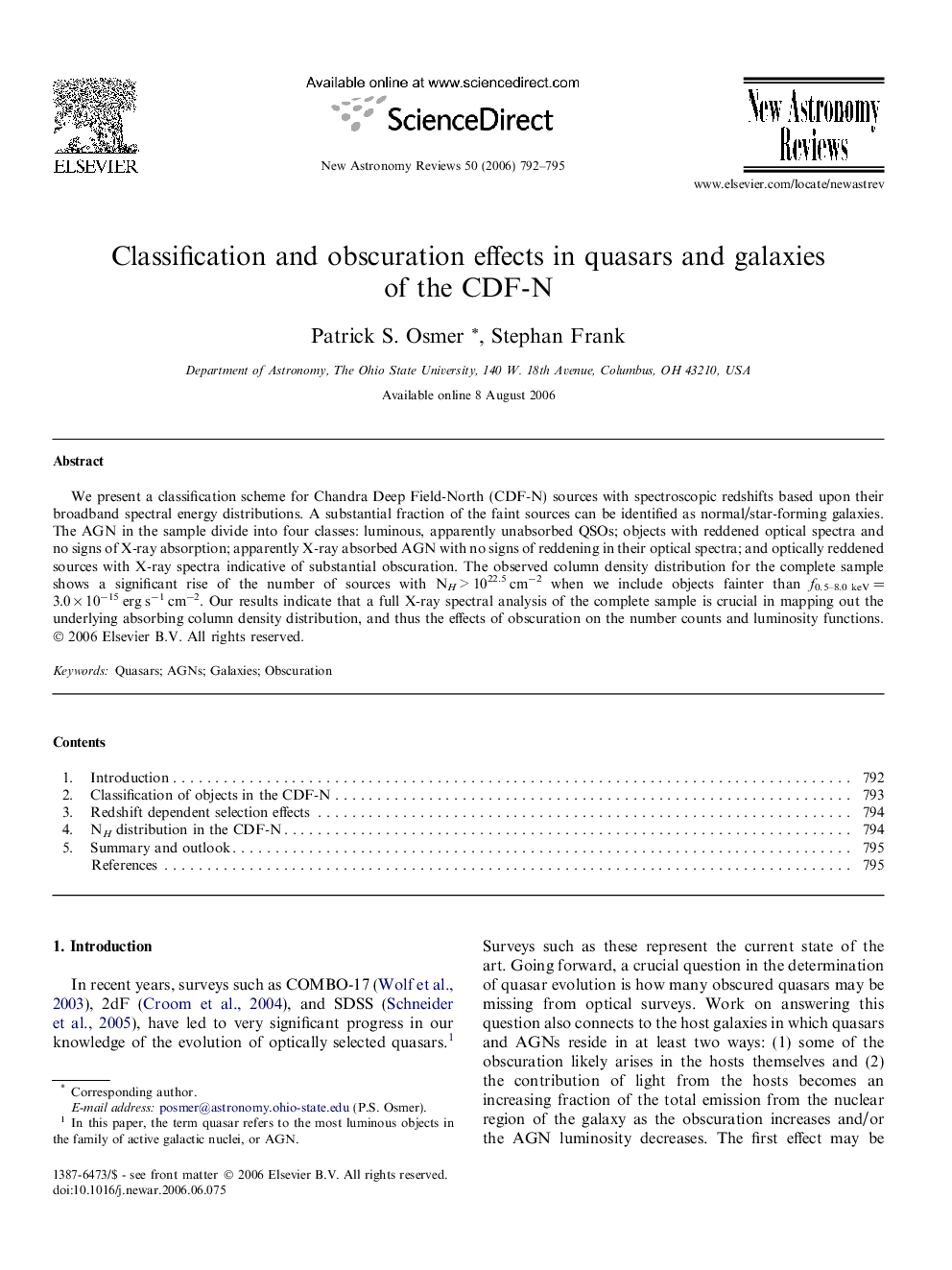| Article ID | Journal | Published Year | Pages | File Type |
|---|---|---|---|---|
| 1780329 | New Astronomy Reviews | 2006 | 4 Pages |
Abstract
We present a classification scheme for Chandra Deep Field-North (CDF-N) sources with spectroscopic redshifts based upon their broadband spectral energy distributions. A substantial fraction of the faint sources can be identified as normal/star-forming galaxies. The AGN in the sample divide into four classes: luminous, apparently unabsorbed QSOs; objects with reddened optical spectra and no signs of X-ray absorption; apparently X-ray absorbed AGN with no signs of reddening in their optical spectra; and optically reddened sources with X-ray spectra indicative of substantial obscuration. The observed column density distribution for the complete sample shows a significant rise of the number of sources with NH > 1022.5 cmâ2 when we include objects fainter than f0.5-8.0 keV = 3.0 Ã 10â15 erg sâ1 cmâ2. Our results indicate that a full X-ray spectral analysis of the complete sample is crucial in mapping out the underlying absorbing column density distribution, and thus the effects of obscuration on the number counts and luminosity functions.
Related Topics
Physical Sciences and Engineering
Physics and Astronomy
Astronomy and Astrophysics
Authors
Patrick S. Osmer, Stephan Frank,
